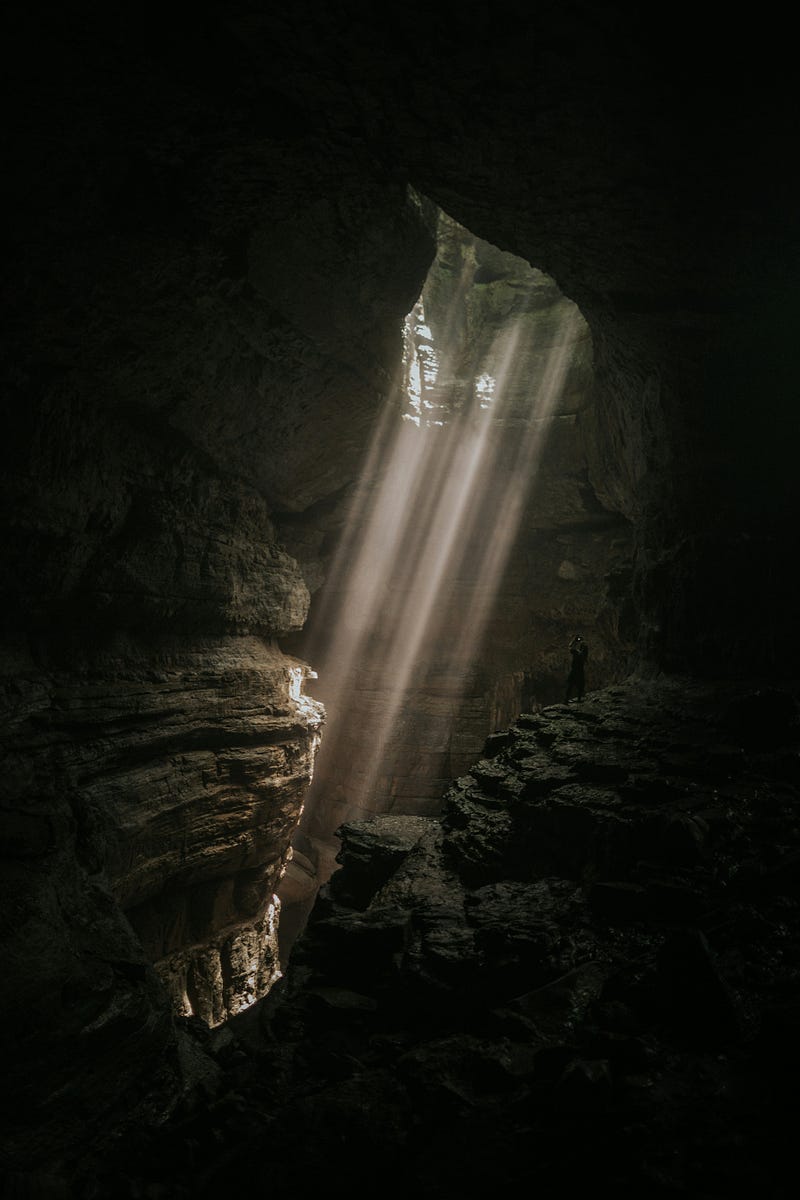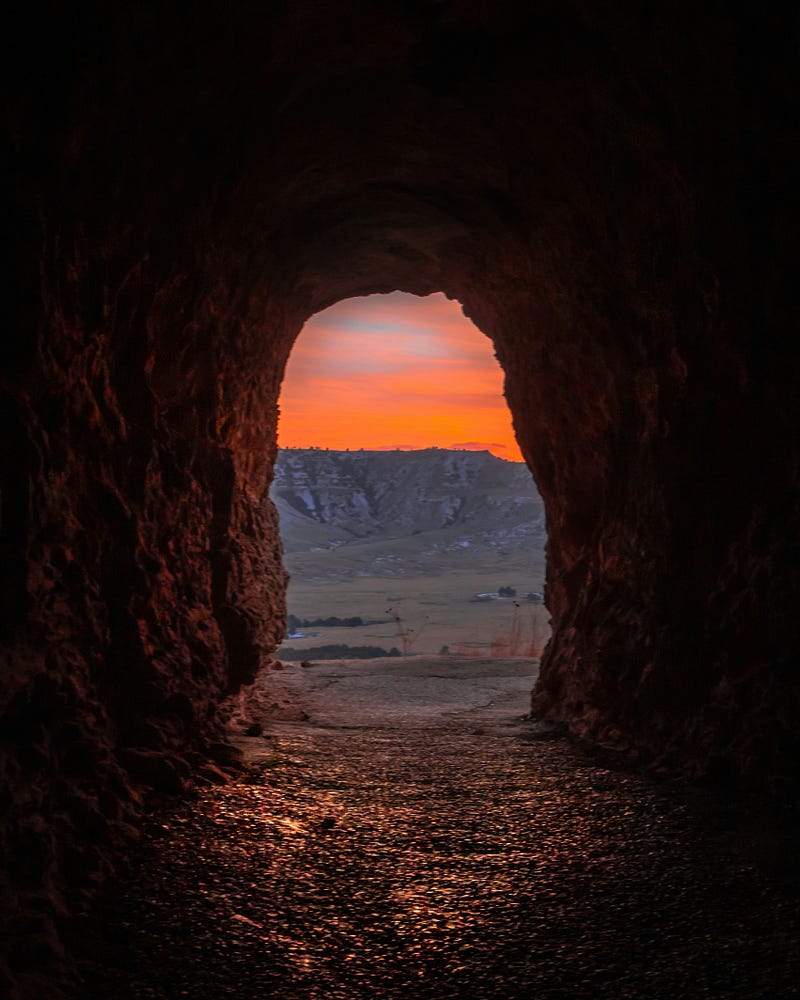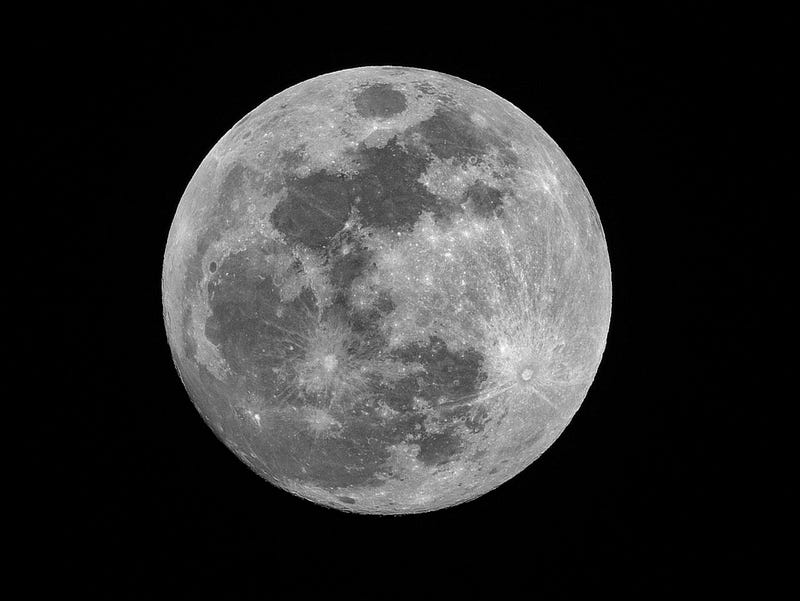Exploring the Moon's Underground Caves: A New Frontier
Written on
Chapter 1: The Moon's Hidden Caves
In the pursuit of a sustainable lunar habitat, scientists have made a groundbreaking discovery: substantial evidence of a vast underground cave on the Moon. This finding, spearheaded by a team from Italy, indicates that these lunar caves may offer a sheltered environment for astronauts to live and work. Utilizing sophisticated radar technology, researchers aim to locate additional caves beneath the Moon's surface, which could transform our approach to lunar colonization.
For years, the idea of lunar caves has remained largely speculative. However, researchers Leonardo Carrer and Lorenzo Bruzzone from the University of Trento have finally provided compelling proof of their existence. “Lunar caves have puzzled scientists for over half a century, so it’s thrilling to confirm their presence,” they shared with The Associated Press. Their research, published in the journal Nature Astronomy, reveals exciting new avenues for lunar exploration and habitation.

The Moon's surface is marked by pits created by the collapse of ancient lava tubes. Eons ago, it was volcanically active, with lava flowing through channels and forming these tubes. Over time, some of these structures have collapsed, resulting in the formation of pits. The cave identified by the researchers lies within one such pit, specifically the Mare Tranquillitatis pit.
From their data, the researchers estimate that the cave measures about 150 feet in width and stretches up to 260 feet in length, slightly smaller than a standard American football field. This cave is located deep within the pit, likely formed due to the collapse of a lava tube. While we lack a clear image of the cave's interior, terrestrial examples, like those found in Hawaii, provide a glimpse of what these lunar formations might resemble.
NASA's Lunar Reconnaissance Orbiter (LRO) has detected over 200 pits on the Moon, hinting at the possibility of numerous underground caves. These structures could offer future astronauts essential protection from the Moon's extreme conditions, as suggested by the research team.

Advantages of Lunar Caves
- Temperature Regulation: The Moon experiences extreme temperature fluctuations, reaching 250°F during the day and plummeting to below -200°F at night. Underground caves could maintain a more stable environment, potentially around 63°F, according to earlier studies.
- Radiation Protection: The thick rock cover of lunar caves can shield astronauts from harmful high-energy radiation that impacts the Moon's surface, which is vital for long-duration missions.
- Reduced Construction Needs: Utilizing existing cave structures could minimize the necessity for extensive building efforts on the lunar surface.
Challenges of Lunar Caves
- Access Issues: The Mare Tranquillitatis cave is situated over 400 feet below the surface, at the bottom of a steep slope lined with loose debris. Developing safe navigation technology will be critical.
- Limited Exploration Capabilities: While radar can help identify potential caves, comprehensive exploration and mapping will be needed to assess their viability for habitation.
- Resource Extraction Difficulties: If lunar caves contain water ice, advanced technology and infrastructure will be necessary for extraction and utilization.

What If We Discover More Caves?
Imagine uncovering a multitude of underground caves on the Moon, each presenting a distinct environment for scientific investigation and possible habitation. These caves may differ in size, structure, and accessibility, offering a diverse range of options for establishing lunar habitats.
What If We Create a Lunar Base Within a Cave?
Picture a future where astronauts reside and conduct research in a spacious lunar cave, protected from harsh surface conditions. This stable setting could facilitate prolonged missions, scientific endeavors, and even the cultivation of food through hydroponic systems.
What If Lunar Caves Harbor Water?
Should significant deposits of water ice be located within these lunar caves, it could radically change the landscape of lunar exploration. Water is essential not only for sustaining life but can also be split into hydrogen and oxygen for rocket fuel, paving the way for deeper space missions.

The journey to reach and explore these caves will necessitate cutting-edge technology and engineering solutions. Innovations such as jet packs, lunar elevators, or sophisticated robotic systems may be required to navigate the steep slopes and debris-filled entrances. Additionally, ensuring the caves' structural integrity for long-term habitation will be paramount.
The potential discovery of water ice within these caves introduces another layer of complexity. Extracting and processing this water will demand advanced technologies, yet the advantages could be tremendous. Water serves as a vital resource for any lunar base, providing drinking water, breathable air, and fuel for rockets.

The implications of lunar caves for the future of space exploration are profound. Establishing a permanent lunar presence could serve as a crucial stepping stone for missions to Mars and beyond. The ability to live and work within these caves may expedite this process, offering a sustainable and sheltered environment for astronauts.
Scientific Insights: Lunar caves could provide unique opportunities for scientific research, acting as natural laboratories that preserve the Moon's geological history and volcanic activity. Understanding these phenomena could yield valuable insights into the early solar system.
Technological Advancements: The quest to explore and inhabit lunar caves will foster innovations in robotics, materials science, and life-support systems. These developments may also have applications on Earth.
Global Cooperation: Establishing a lunar base will necessitate international collaboration. By combining resources and expertise, space agencies and private companies can tackle the challenges of lunar exploration, paving the way for future missions to Mars and beyond.

A Pivotal Moment in Space Exploration
The identification of a substantial underground cave on the Moon marks a significant milestone in the endeavor to create a permanent lunar base. Despite the challenges ahead, the potential advantages of residing and working in these lunar caves are vast. This discovery unlocks new opportunities for scientific exploration, technological progress, and international partnerships in the realm of space exploration.
As we gaze toward the future, the dream of astronauts living and functioning within lunar caves becomes increasingly feasible. The protective qualities of these natural formations, coupled with the potential for resource extraction, position them as ideal candidates for establishing a sustainable lunar presence.
To remain informed on the latest developments in lunar exploration and other space-related topics, continue following our articles. Join the dialogue on how groundbreaking discoveries and innovative thinking are shaping the future of space exploration and enhancing our understanding of the cosmos.
This video by TechCrunch explores the recent findings of a significant cave on the Moon, shedding light on its potential implications for lunar habitation.
In this video, discover the exciting details surrounding the new discovery of a cave on the Moon and what it could mean for future explorations.